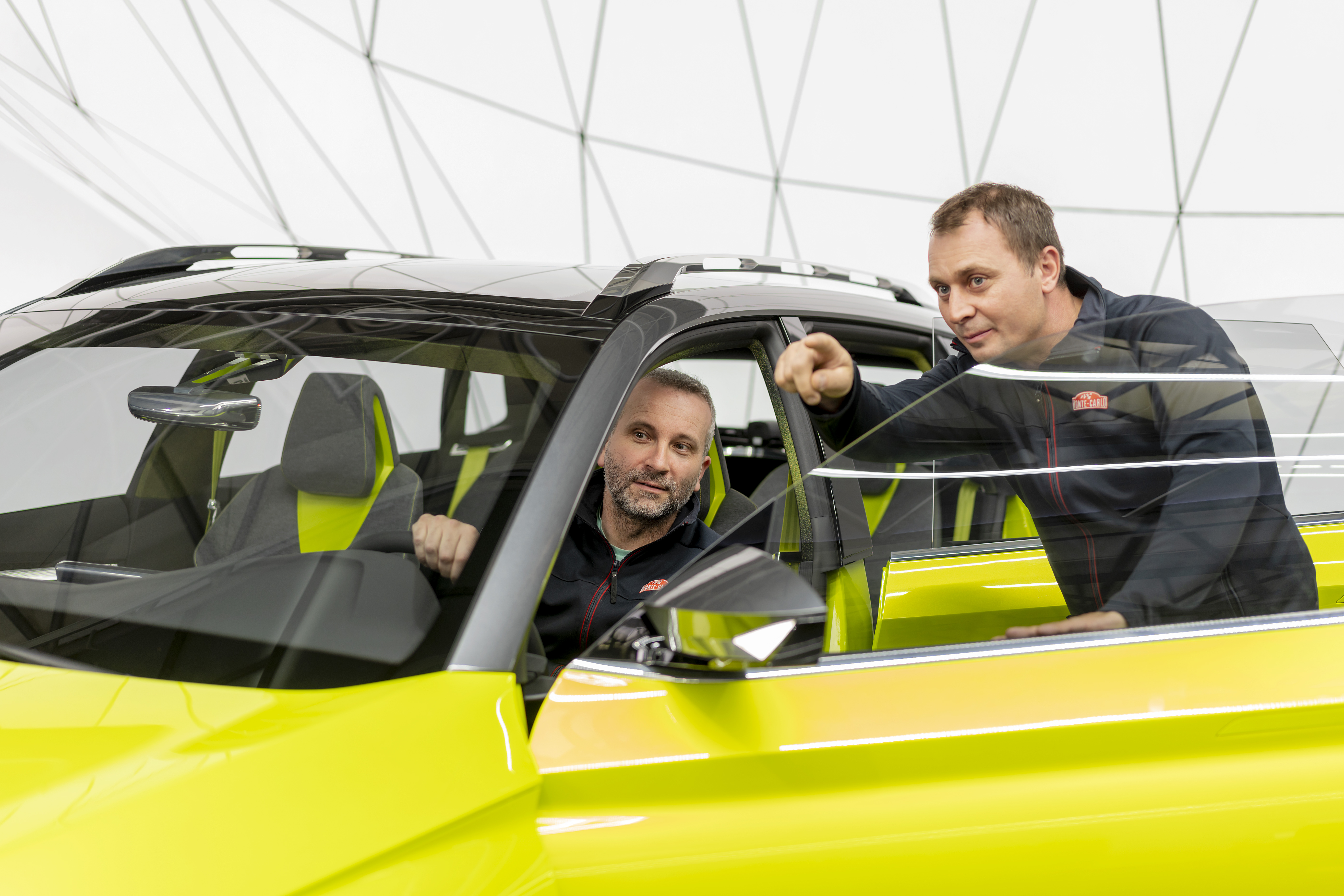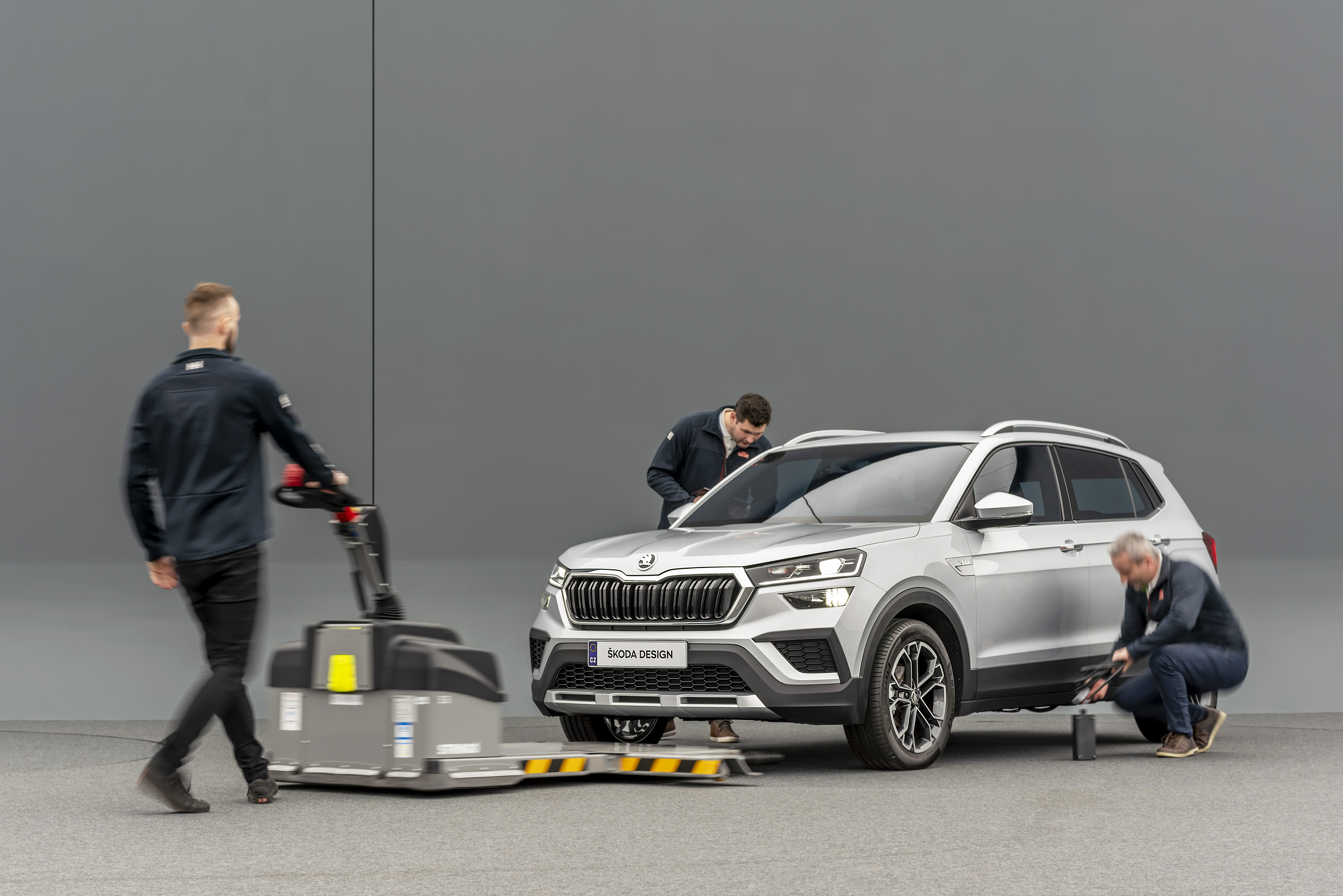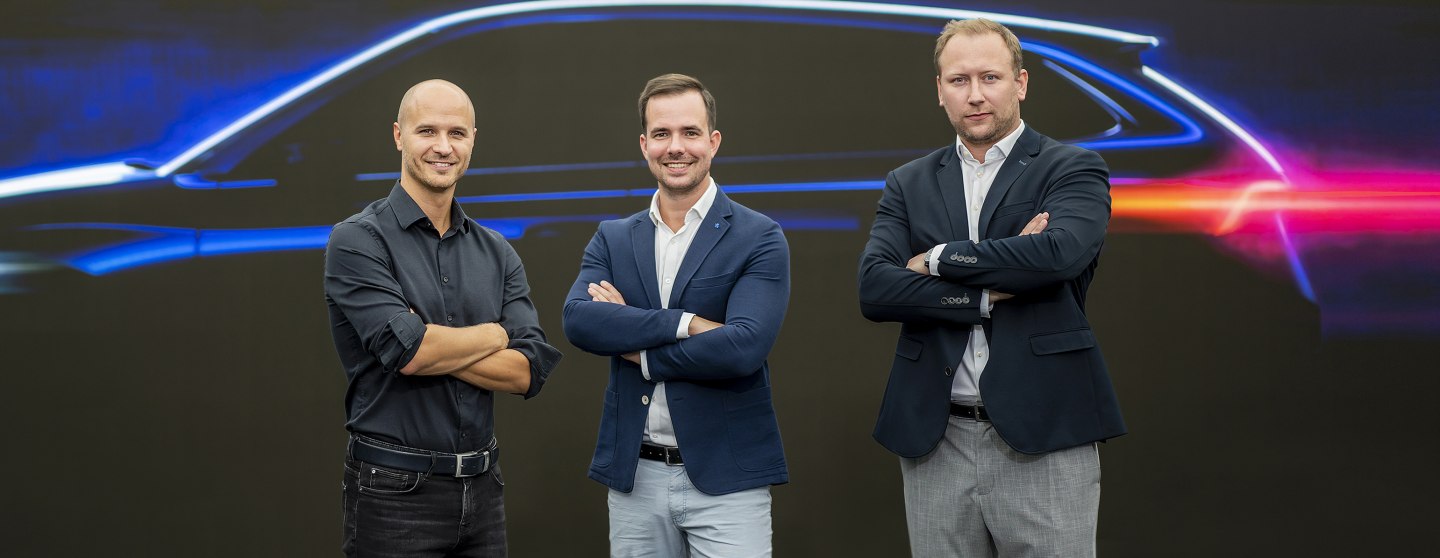Presentation in a former bank or online
The work of these special logistics experts is made even more complicated by the fact that models are often transported to and displayed in unusual places. But even if the car is merely being readied for presentation on its home turf in Mladá Boleslav or on the company polygon, this still may not be an easy task. “Sometimes we have to prepare seven models for a single presentation, and that’s a lot of work for our team of eleven. Last year’s event at the polygon was a record: we prepared 21 different models at the same time, and that was a hugely complicated operation,” explains Morávek.

Public presentations of the models, which are often staged in unusual locations, are a challenge. “We have displayed models in the Mánes exhibition hall in Prague, for example, but also in a former bank building during a design festival,” Morávek points out. In places like this that were not designed with cars in mind, the operation is a real challenge. “We have to transport the cars there, of course, but that’s just one detail. Sometimes we have to completely figure out how the car is going to be presented at a given place and how we can actually get it there,” says Morávek. In the former bank building in the centre of Prague, for example, it was necessary to demolish a part of the entrance used to get the cars inside and then restore it to its original state after the exhibition.
 Everything has to be accurately measured before presentation – millimetres can be the difference between success and failure.
Everything has to be accurately measured before presentation – millimetres can be the difference between success and failure.
“You often only have centimetres to work with,” Morávek says. In these cases, the person driving the model (whether sitting inside the car or controlling it remotely) does not manipulate the car by himself, but has other colleagues to help him. “The models often have a restricted view, with no cameras or other equipment, and their proportions are always new to us,” he says, explaining why driving the models is so challenging. “We have ŠKODA’s best drivers in our team,” Morávek says in praise of his colleagues.
 Every presentation has its own rules, depending on whether the audience is the company management, journalists or the general public.
Every presentation has its own rules, depending on whether the audience is the company management, journalists or the general public.
Even presentations at car shows are not a walk in the park. These usually take place abroad, and this involves a lot of paperwork, among other things. The design presentation support team handles this part of the operation as well. “The biggest challenge at car shows is time: there is work being done on the models until literally the last minute, and that doesn’t leave much room for delays during transport,” explains Morávek.







































